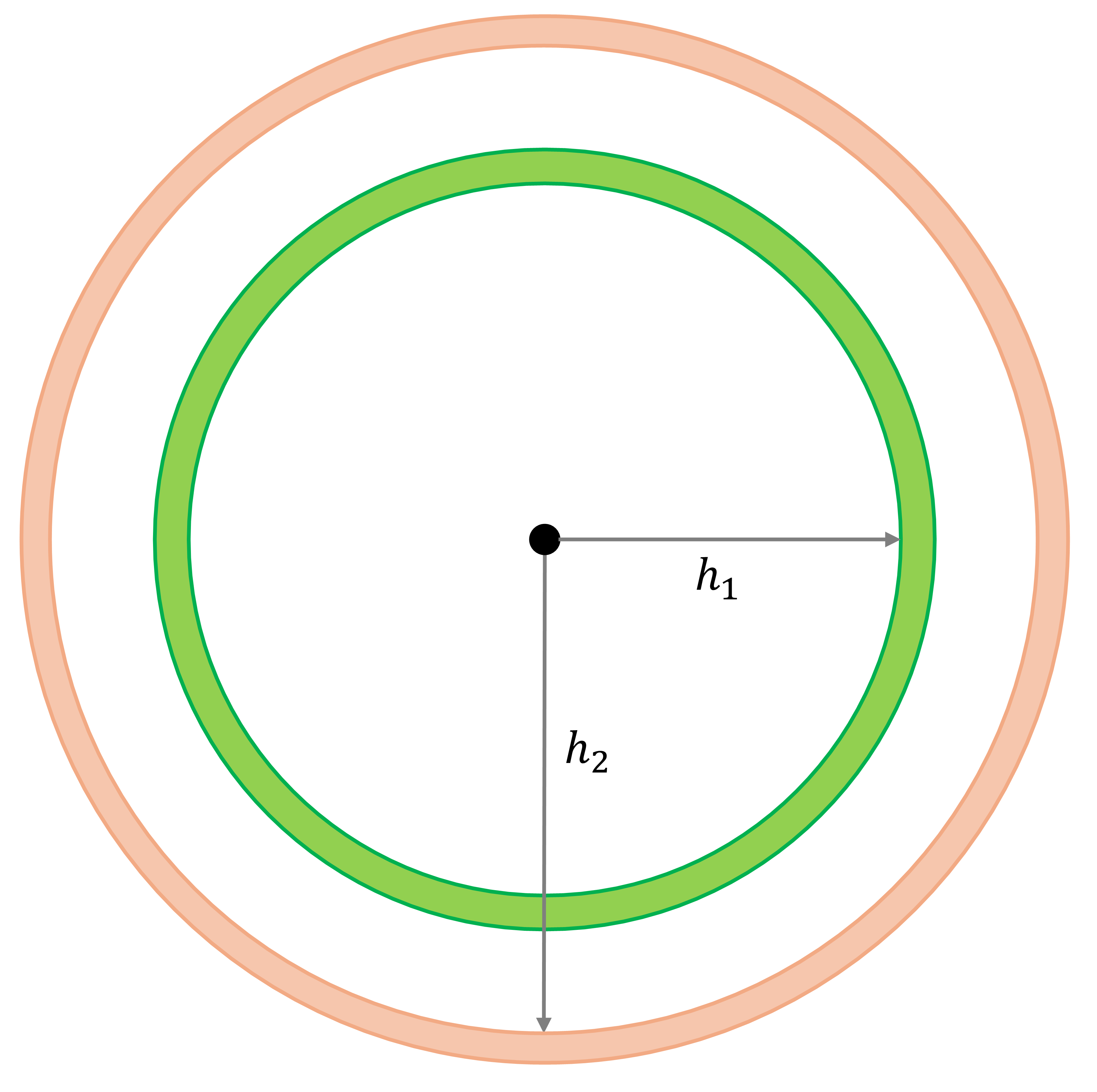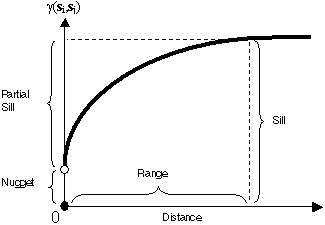Spatial dependence in spatially continuous data
- Spatial interpolation assumes that the data exhibit positive spatial autocorrelation.
- Single-scale autocorrelation measures, such as the global Moran’s I statistic, are not well-suited for spatially continuous data due to its smooth nature, where neighborhoods are not well-defined.
- Consequently, a measure that quantifies autocorrelation at different scales is required.
Variographic analyisis

We define a binary spatial weight matrix as:
\[ w_{ij}(h)=\bigg\{\begin{array}{l l} 1\text{, if } d_{ij} = h\\ 0\text{, otherwise}\\ \end{array} \]
Variographic analyisis
Autocovariance:
\[ C_{z}(h) = \frac{\sum_{i=1}^{n}{w_{ij}(h)(z_i^2 - \bar{z})(z_j^2 - \bar{z})}}{\sum_{i=1}^n{w_{ij}(h)}} \]
Semivariance:
\[ \hat{\gamma}_{z}(h) = \frac{\sum_{i=1}^{n}{w_{ij}(h)(z_i - z_j)^2}}{2\sum_{i=1}^n{w_{ij}(h)}} \]
Covariogram and semivariogram
Covariogram:

Semivariogram:

The autocovariance, \(C_{z}(h)\), and semivariance, \(\hat{\gamma}_{z}(h)\), are related as follows: \[ C_{z}(h) = \sigma^2 - \hat{\gamma}_{z}(h) \] where \(\sigma^2\) is the sample variance.
Kriging
The theoretical spatial continuous process can be expressed as: \(z_i = f(u_i, v_i) + \epsilon_i\)
To interpolate, we use: \(\hat{z_i} = \underbrace{\hat{f}(x_p, y_p)}_{\text{a smooth estimator, e.g., trend surface}} + \hat{\epsilon_p}\)
Here, \(\hat{\epsilon}_p = \sum_{i=1}^n {\lambda_{pi}\epsilon_i}\) and \(\epsilon_i = z_i - \hat{f}(x_i, y_i)\).
The expected mean squared error or prediction variance is: \(\sigma_{\epsilon}^2 = E[(\hat{\epsilon}_p - \epsilon_i)^2]\).
The expectation of the prediction errors is zero (unbiassedness) Find the weights \(\lambda\) that minimize the prediction variance (optimal estimator).
Activities for today
Reference
2025 Zehui Yin